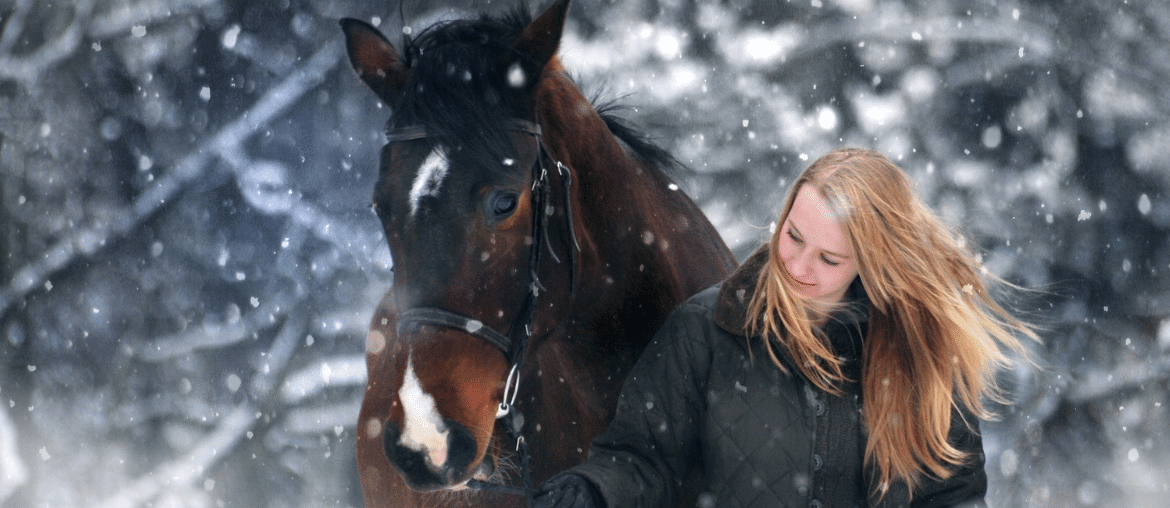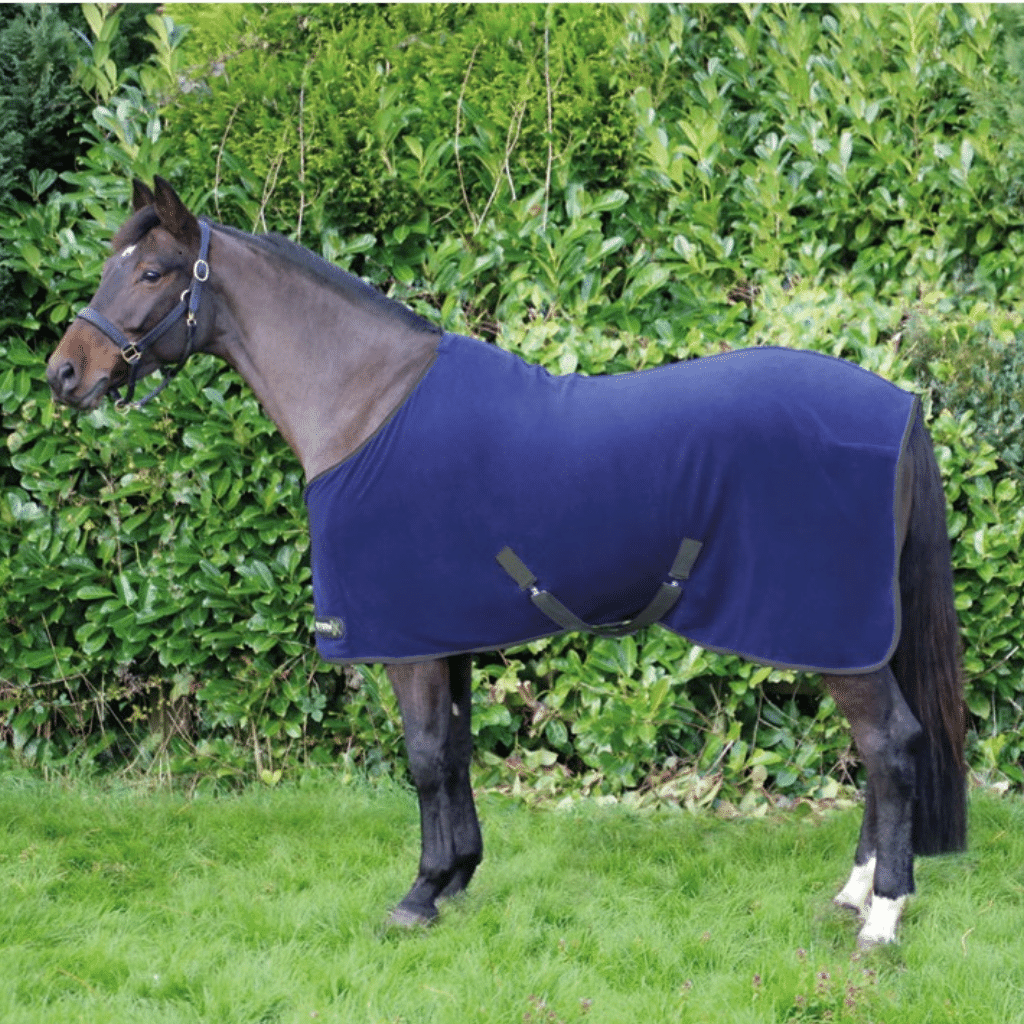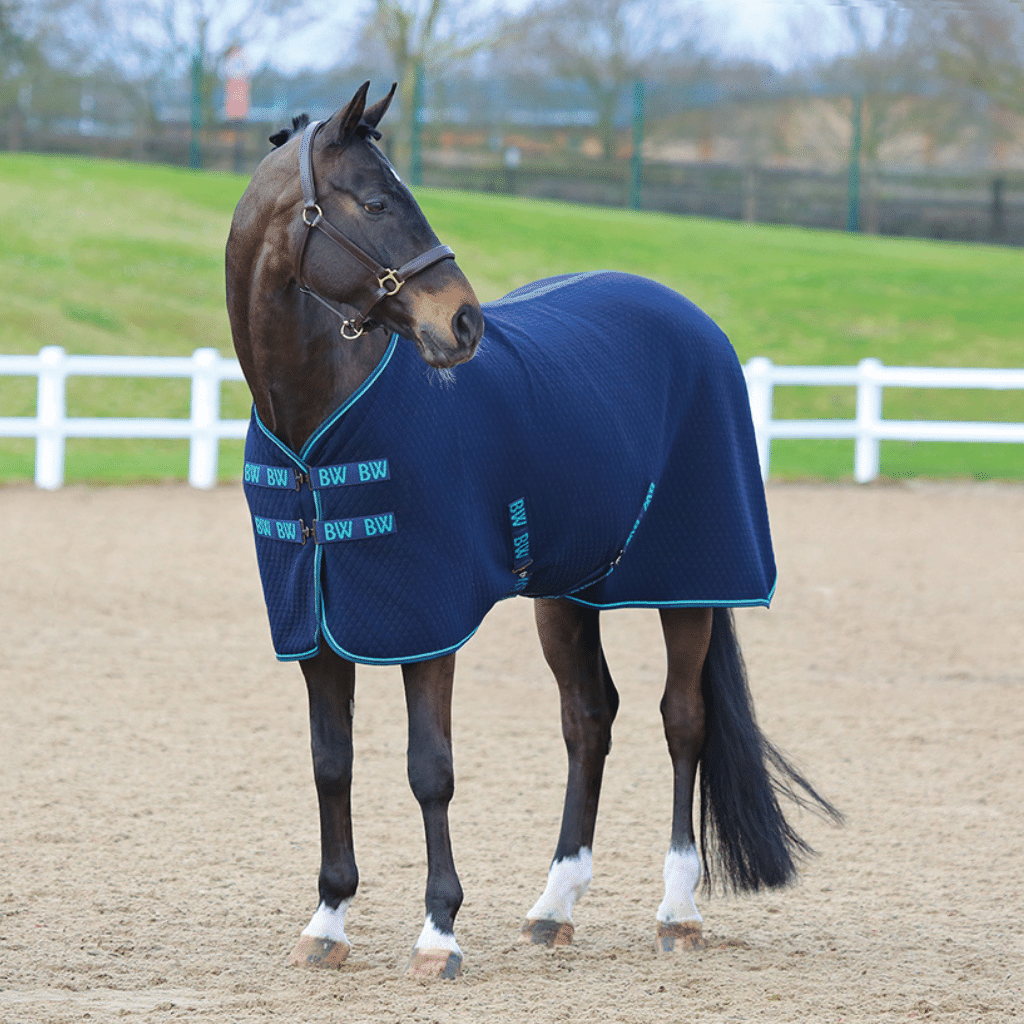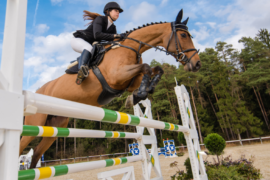Firstly – the background!
Have you ever seen a horse covered in snow and thought how cold they must be? In actual fact, the reason snow is able to sit on a horse’s back without melting is due to the incredible thermal insulating properties of their coats. A dense coat keeps air circulating round the horse, trapping the warm air in and keeping the cold out. Even when a horse stands out in a downpour, as soon as the rain stops, the natural coat does a great job of getting him or her warm and dry, by funnelling the moisture down to the tips of the individual strands of hair where it can evaporate.
However, in reality lots of our horses are not left in their natural state. We clip them; rug them; brush them; and of course, ride them.
When we change their coats we alter those insulating properties meaning that it’s not so easy for a horse to keep themselves warm and dry.
For example:
- When we ride them they’ll often get sweaty. And sweat can leave the coat matted meaning the natural evaporation can’t happen so effectively. The coat stays damp for longer, making it more difficult for the horse to keep warm.
- So, to help us manage that sweatiness we’ll often clip them. This stops the problem of damp, matted hair but leaves the skin vulnerable to the cold meaning that we’ll normally keep them rugged up.
- And getting the right weight of rug to make sure your horse is a comfortable can be a challenge – too light and they won’t be warm enough, too thick and you risk them sweating, which in turn will cool them down too much, starting the cycle once again!
.
So it sounds like I might need a cooler?
Almost certainly yes and the reason is this….
By putting a cooler rug on a horse who is sweaty or soaked to the skin after a downpour you can:
- Help speed up the evaporation process; and
- Help keep the horse warm while that’s happening.
How does a cooler rug work?
You will see lots of different rugs described as cooler rugs, and although they will vary dramatically in price the principle is the same for all of them. They allow a layer of warm air to circulate around the horse’s body, encouraging any moisture to come away from the horse’s body so that it can evaporate into the atmosphere.
If the cooler you’re using is effective then you should see water beading on the outside of the rug as the horse dries underneath.
What’s the best cooler rug to choose?
Well – it would be great if there was an easy answer to that one!
In truth the best cooler rug is the one that is most appropriate for your horse and in an ideal world you should probably have two (or maybe even three). Where budget is a factor or if you can only really have one then you should probably consider a simple fleece. They can be great value for money, are generally effective, are easy to wash and quick to dry.
Things to consider when choosing the most appropriate cooler for your horse:
- How heavy is it? You’ll almost certainly want something thicker for use in the winter – but be careful it’s not too thick if your horse doesn’t generally feel the cold or isn’t clipped. You want to avoid the risk of them sweating up while you’re trying to achieve the opposite.
- Can you afford two? In an ideal world you’ll put one cooler on straightaway and swap that for a second when it gets damp through.
- How long is your horse likely to wear it for? If your lifestyle means that you can’t stay with your horse as they dry off then fit is super, super important. If you have to leave any rug on an unsupervised horse then you must make sure it’s a great fit, doesn’t pull on the shoulders or dig in at the withers. Bindings that rub can cause lots of horrible problems, no least that your horse might be uncomfortable or in pain.
Is a cooler just designed to help dry off my horse?
No – they are very versatile and can be a useful addition to your horse’s wardrobe. You can use them for lots of other things such as:
- Moving up and down your horse’s body while you’re grooming them on a chilly day;
- Using them as an extra layer under another rug if the temperature drops (but do make sure they fit well);
- Using to help regulate your horse’s temperature while they’re travelling;
- Folding over your horse’s hind-quarters when you first get going on a cold day (make sure any surcingles are secured out of the way) or while you’re waiting around at a show or an event.
What types of cooler rugs are there?
- The classic ‘string vest’ sweat rug and the modern mesh cooler alternative. Back in the day you’d ‘thatch’ your horse, layering clean straw under a sweat rug to create that all important channel of air. Nowadays use a mesh cooler on a hot day, after a bath to help keep any little chills at bay or in the winter underneath another cooler to maximise airflow.
- Fleece rugs. You can get thin ones; thick ones; bonded ones; cheap ones and very expensive ones. All are effective at taking moisture away from the horse. Pick a nice thick one for use in the winter if your horse is clipped.
- Jersey coolers. Basically a fleece with a smooth outer surface – more like sweatshirt fabric. They work in exactly the same way as a fleece but they can look smarter than an inexpensive fleece and they don’t pick up ‘bits’ (of fluff, hay, shavings etc.) in the same way a fleece can.
- Wool and wool mix rugs. The height of luxury and a fabulous natural fabric, wool is well know for its amazing insulating properties (all those sheep can’t be wrong…). Very effective but typically quite thick (we haven’t found a lightweight merino horse rug yet.) They’re perfect for the winter but they’re definitely not a budget option.
- Waffle coolers, quilted rugs and the original Thermatex. Made in such a way that the fabric has a textured or honeycomb effect which can help to create more air-pockets and may be more effective.
Any other cooler with a fancy name! Maybe something like MaxCool, AirMove or DryFlex (I’ve made these up but you get where I’m coming from!). The principle will be the same so if you like how it looks, it fits your horse nicely and is the right thickness for the time of year then it will probably do what you need it to.
Should I pick one with or without a built in neck?
You can really pick either but again it will probably come down to the type of horse you have and whether you can find a rug that fits well.
In general a horse will be warm if their body is warm (a bit like us keeping our core nice and cosy). We’d probably recommend a neck as being beneficial for horses who are fully clipped out.
Anything else I should know?
Yes, a couple of things:
- Don’t be tempted to use a cotton rug as a cooler. Although they’re great for use in the stable to keep the dust and stains away and ideal as an under-rug for sensitive horses or those prone to static, cotton is not great at moving moisture. A cotton rug that gets wet, stays wet and takes ages to dry. This isn’t something you want when you’re trying to get a horse dry and warm.
- If your horse is soaking then you can speed up the drying process by giving them a good rub down with a dry towel or cloth. It’s worth trying to get some of the surface moisture off your horse before you put a rug on, particularly if they’re soaking because they’ve been caught in the rain.










